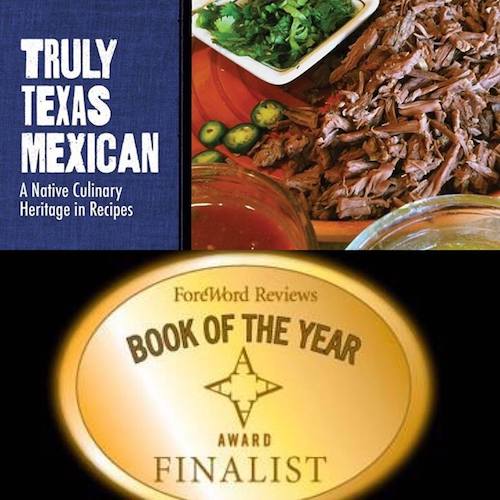Holiday Tamalada: Chile Ancho Bean Tamales
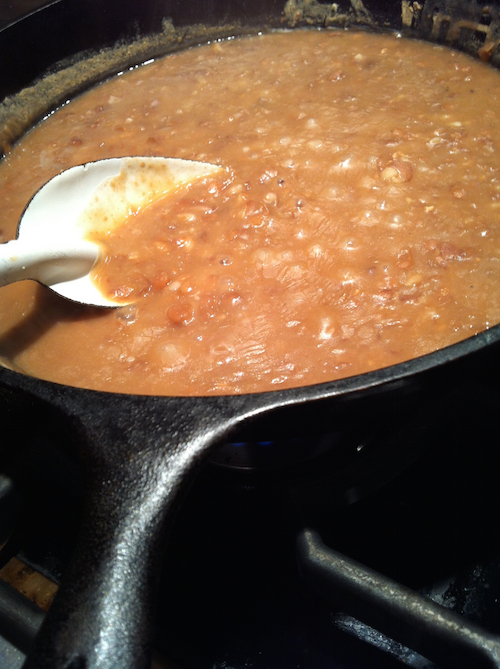
A holiday tamalada is a community, family event where everyone chips in to make a few tamales for the holidays, just a few, about 50 or 60 dozen. It’s always fun to make bean tamales over a weekend and invite family and friends to your tamalada. It’s not just sharing the work, it’s the best occasion for the celebration of food, family, friendships and, a little chisme, gossip.
Holiday Gift Cookbook!
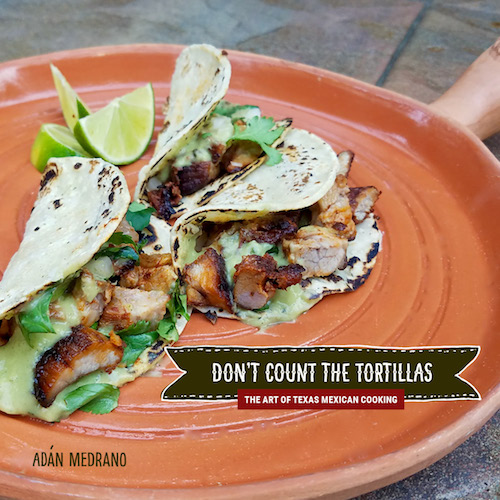
Over 100 kitchen-tested recipes: Tacos Al Pastor; Red Enchiladas; Tortilla Soup; Nopalitos Salad;
Also Vegan dishes and traditional Mexican pastries and cookies like Marranitos!
There’s even a Chile Con Queso Soufflé and yummy Mesquite Candy Balls! Easy step-by-step guide.
Appetizers, Cocktails and Desserts. Illustrated with gorgeous pictures, written with history and humor.
ORDER NOW
Tamales de frijol, bean tamales, are traditional all the way from Texas to Puebla to Oaxaca and the other regions of Mexican cuisine. I love them not just because of their history, pre-dating the arrival of European immigrants who started bringing over pigs, but because they are nutritious and delicious, roasted stove-top and flavored with dried chiles.
We use pinto beans here in Texas but farther south, in places like Oaxaca and Puebla, they use black beans. To prepare the pinto beans, it’s essential that, before adding chiles and spices, you first roast the pinto beans stove-top. This culinary technique transforms the protein molecules of the beans into more complex molecules that transform the taste, giving the beans a wonderfully complex flavor. Beans cooked with this traditional technique are called simply, bien guisado, properly stewed/cooked. More recently a scientific term was given to this cooking technique, the Maillard reaction. It’s named after a French physician and chemist, Louis Camille Maillard, who described the process in 1912. The transformation starts to happen at around 285ºF. No oil needed.
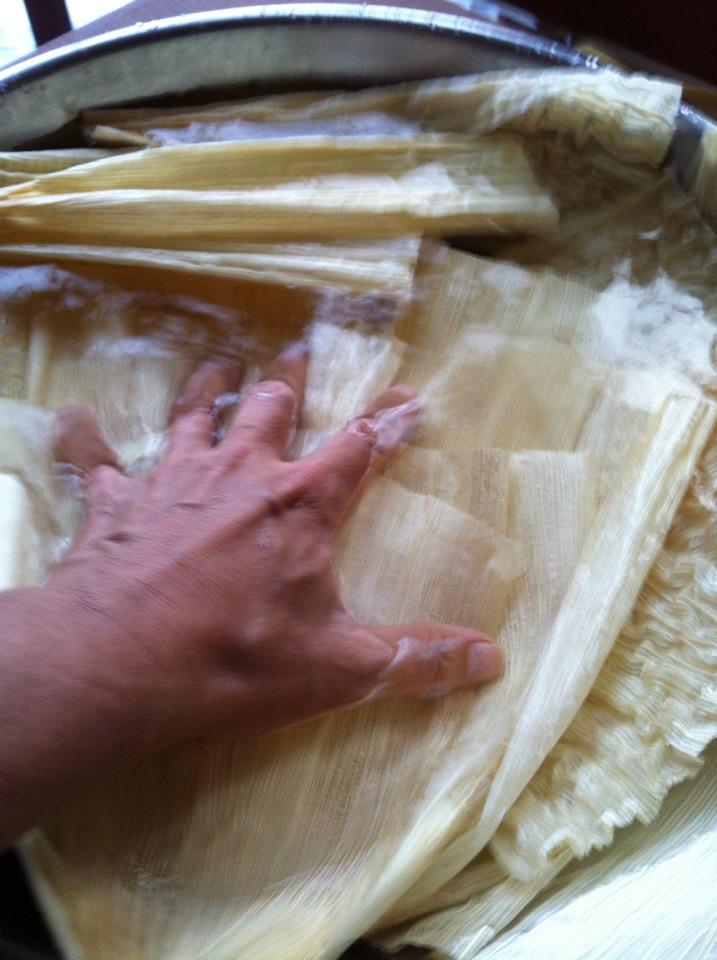
My family always made bean tamales and I think they are common in most Texas Mexican American homes. When we drove our pickup truck to Nava, Coahuila, 25 miles south of the Rio Grande, our relatives who lived there also served tamales de frijol.
Holiday Tamalada, Bean Tamal Recipe
This recipe is excerpted from my book, Truly Texas Mexican: A Native Culinary Heritage In Recipes page 51.
Ingredients: (makes one dozen tamales, or up to 16 if you stretch the masa)
For Masa and Husks:
16 dried tamale husks, Hojas de Maíz, soaked in hot water for at least 30 minutes.
1 lb fresh masa OR 1 lb masa harina (corn flour like the Maseca or Quaker brands) rehydrated with 2 1/2 to 3 cups water to make a soft masa.
1/2 cup Canola oil (OR: I use organic palm oil shortening that is certified to be sustainable, no de-forestation). It works really great and as a solid fat it harkens back to pre-1500, before pigs, when we cooked with absolutely no lard .
1/4 to 1/2 cup water if needed
For the Chile Paste: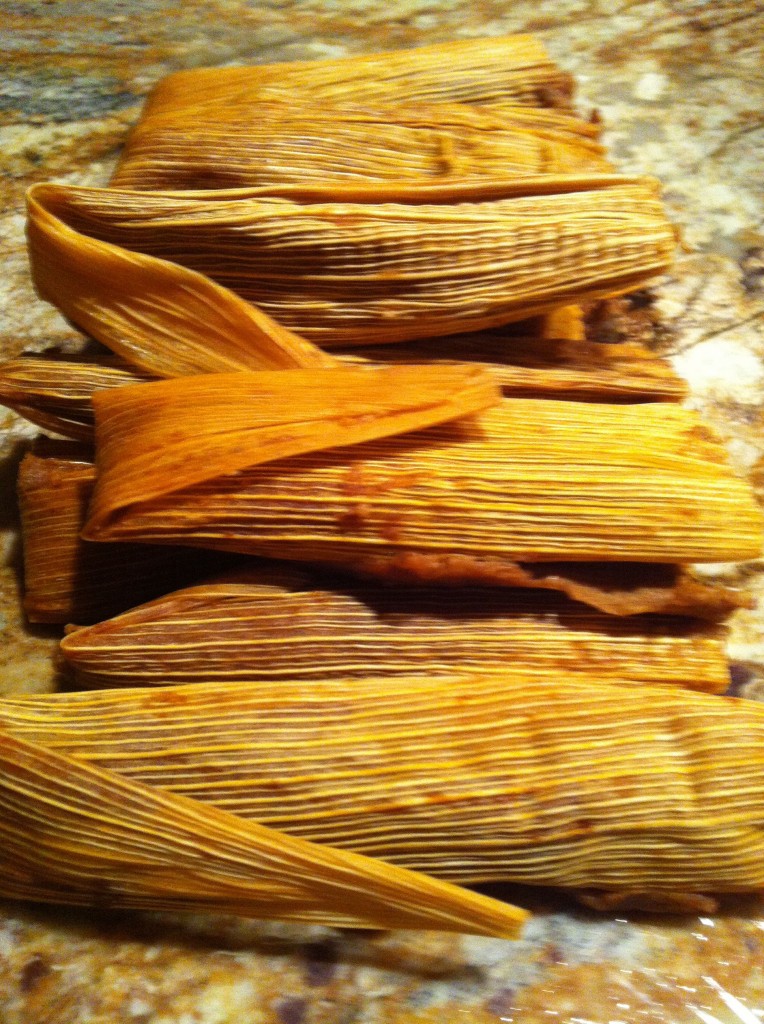
1 garlic clove
3 Chiles Ancho, cleaned, seeded and deveined
3 Guajillo Chiles, cleaned, seeded and deveined
1/2 tsp ground cumin
3/4 cups water
1 Tbsp canola oil
1 tsp salt or to taste
For the Beans:
1/2 lb beans. If you want to, soak the beans overnight so that they will cook more quickly, 1 1/2 hours. If you don’t soak them (I never do) cooking time will be 4 hours.
1 tsp salt
4 cups water
Method
First, place the corn husks in a large container and cover them with hot water. Let them soak and soften for at least 30 minutes and overnight if you like.
For the Beans:
1. Pick over the beans to remove any small stones or debris. Rinse them in a colander.
2.In a large pot, add the beans and salt. Cover the beans with 4 cups of water, bring to a boil, then turn down the heat and simmer, covered. If the beans have been soaked overnight you will cook them for 1 1/2 hours. If they have not been soaked, it will take 4 hours. They are done when completely soft when you press one between your fingers. Note: As they cook,keep checking to make sure you maintain the water level at least 2 inches above the beans. Add additional water as needed.
3. When the beans are completely cooked and soft, heat a deep skillet on medium heat and add the beans and 2 cups of the liquid.
4. Using a masher, smash the beans until they are smooth and soupy, adding more liquid as needed. Bring them to a boil and continue cooking the beans over medium to low heat, scraping the bottom as the bottom layer of beans roast and become dry. Keep doing this for about 15 minutes so that the Maillard reaction kicks in and the beans develop umami flavor.
5. If you’ve made the chile paste, add 3 Tbs chile paste to the beans and blend. If you don’t have the paste made, just set the beans aside until you are ready to add the chile paste.
6. After adding the chile paste, cook on low heat, uncovered, until they thicken and make a workable spread for the tamale filling.
For the Chile:
1. To devein the chiles, first lay the chile flat on a cutting board and, using a paring knife or scissors, cut a slit lengthwise. Then break off the stem, open the chile along the slit and take out the seeds and veins (membranes).
2. In a large saucepan, cover the cleaned chiles with water and bring to a boil. Turn off the heat and let the chiles steep for 15 minutes so that they re-hydrate and become tender.
3. Drain the chiles, discarding the water. Let the chiles cool a bit, then place the chiles in a blender along with the garlic and cumin plus 3/4 cup water.
4. Blend to a very fine paste, adding more water if needed.
5. In a Dutch oven, heat the Tbsp Canola oil and fry the chile paste until it begins to change color and most of the liquid has evaporated. There will be splatter, so keep a lid handy to partially cover it. Simmer for about 15 minutes and then adjust the salt. The sauce should coat the back of a spoon.
For the Tamal Masa:
1. In a stand mixer, using the paddle attachment, add 1/4 cup of the chile sauce to the masa and mix thoroughly.
2. In a saucepan heat the oil to the point just before it shimmers.
3. Adjust the mixer to low and SLOWLY pour the hot oil (not warm but hot) into the masa to incorporate. It will sizzle as it makes contact. (watch out for splatter).
4. When the oil is incorporated, turn up the mixer to medium and mix well. Add water as needed to make a thick batter that you can easily spread onto the corn husk. It’s thicker than pancake batter.
To assemble the Tamales:
1. Beginning 3 inches in from the pointed end of the husk, use a small spatula or spoon to spread 2 Tbs masa on each corn husk.
2. Spoon about 1 1/2 Tablespoon of the bean filling lengthwise on the masa, then curl the husk, enveloping the filling.
3. Fold the pointed tip up laying it on the side opposite the seam. This will keep the seam closed.
4. Stand each tamal, open-end up, in the steamer basket, forming a circle of standing tamales leaning inward. Place some corn husks on top, then a kitchen towel and cover with a tight-fitting lid.
5. Steam on high heat,for 45 to 50 minutes.
¡Buen Provecho! y ¡Feliz Navidad!
A Holiday Gift Cookbook!
Click here to buy my award-winning cookbook, “Truly Texas Mexican: A Native Culinary Heritage In Recipes.”
Over 100 kitchen-tested recipes of the most delicious traditional dishes like: Barbacoa, Cilantro Rice, Huevos Rancheros, Tostadas, Tamales, Cheese Enchiladas and many more. Margaritas, Cocktails, Appetizers and Desserts. Gorgeous photographs and step-by-step instructions.
